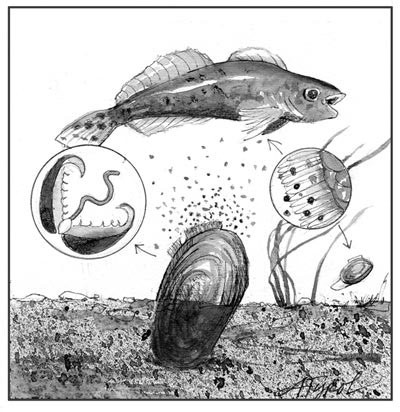
Last week my eight-year-old nephew, Romeo, got on an animals kick. He's an inquisitive kid who's fascinated by things like white blood cells and he absolutely loves sharks. So, knowing that I was some sort of fish doctor, he made his fifty-seventh inquiry in what I learned was to be a series of 2000 questions, "what are the strongest animals in the water?"
“Mussels," I replied. My nephew’s eyebrows scrunched in mild displeasure (sort of like yours are now) because the joke was borderline funny, barely punny and the opposite of true. Regardless, I had an opening to use some new-found knowledge about the dwarf wedgemussel, Alasmidonta heterodon, so I forged ahead.
I told Romeo, who had slumped into a chair and begun inspecting his left foot, that not far from where he sat — at that very moment — an endangered species of mussel was half buried at the bottom of the Connecticut River. Rare and beautiful, it was like pirate treasure. "In my opinion," I said, "it’s beautiful because it fishes with a lure like we do and because of the way it 'swims' around in rivers." Then I relayed a story told to me by Dr. Barry Wicklow, Professor in the Department of Biology at Saint Anselm College.
In experiments in his lab, Dr. Wicklow observed that adult dwarf wedgemussels used the flaps of their pigmented mantle (the fleshy part that produces and coats the insides of the shell) to lure small fish to strike at them. This seemingly self-destructive behavior is part of an amazing lifecycle. Female dwarf wedgemussels, like other species in both fresh and marine waters, are able to project parts of their mantle above the silty, sandy bottom and then use controlled, fluttering waves of rhythmic muscular contractions to attract passing fish. In our region, these most often are tessellated darters, slimy sculpins and juvenile Atlantic salmon. When the hungry fish takes a nip at what appears to be a pulsing mayfly larva, the mussel's muscles contract, expelling hundreds of parasitic offspring into the vacuum created by the attacker's opening mouth.
This cloud of tiny mussels, which at this stage are called glochidia, have been brooding in the mother bivalve's egg pouch for ten to twelve months. They look like microscopic clams with sharp fangs on each half shell. The glochidia use these "teeth" to clamp down on the host's gill or fin tissue and hitch a ride around the stream or river for the next two to three weeks — wherever their host fish swims, so do they. During this time, they metamorphose, developing gills, two adductor muscles, a gastrointestinal tract and other important parts. Then — and nobody knows how — the mini mussel breaks through the protective tissue its host has encased it in and falls to the bottom to grow and reproduce.
Romeo and I used my iPad to check out micrographs of toothy glochidia, diagrams of the mussel lifecycle, and then watched a compilation of YouTube clips showing mantle displays of the wavy-rayed lampmussel (Lampsilis fasciola).
I suppose I could have lectured my lone, eight-year-old audience member with more information about wedgemussels: They only live for ten to twelve years while other species may live for decades; their numbers, like those of other mussel species worldwide, have plummeted over the past 150 years and they are likely extirpated from most of their historical range of the Petitcodiac River in New Brunswick, Canada to the Neuse River in North Carolina. I could have told him of the numerous man-made threats to their survival, including fragmentation of streams and rivers caused by dams, and pollution from runoff laden with ammonia, heavy metals and silt. But after about ten minutes of my best material, Romeo slid from his seat and morphed into a fidgeting lump on the floor.
When I finally stopped oohing and awing over the pulsating mantle videos, he looked up and asked, "no, really, who's the strongest in the water?"
I smiled and delivered the punchline he was fishing for: "Probably sharks."


Discussion *